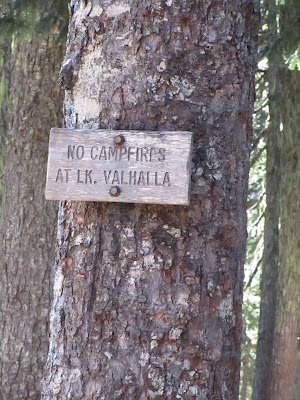Sign at the trail head
Where did we go last week? We took a long drive to the Teanaway in eastern Washington, continued up 10 miles on a dirt, washboard road to the Esmerelda Basin trail to what I kept on calling Fortune Cookie Pass in my head but what is really Fortune Creek Pass. This was by far the most strenuous hike I have tried. It is about 7 miles round trip with a 1750 foot vertical gain. The distance and the elevation were not beyond my abilities, I did Cascade Pass last year and that was 7.5 miles and 1800 ft of gain, but the this trail was extremely rough in places with lots of loose rocks and some more than mildly steep sections. Going down was particularly treacherous. Even using trekking poles did not prevent both of us from slips on the rocks that nearly ended in falls.
Here I am trudging up
Were we rewarded for the effort? Oh, yes, with brilliant displays of fall colors, a few flowers still in bloom including the Scarlet Gilia, or Skyrocket. Bob had not seen one of these flowers for about 10 years and we saw about a dozen on this hike. They only grow on the east side of the Cascades.
Scarlet Gilia or Skyrocket
We also had a close encounter with a pica that scurried away at a rapid pace without posing for a picture, and a golden mantled ground squirrel who peeked out of his hole and looked around long enough for photos.
Have they gone?
I don't hear anything . . .
I guess it is safe to come out . . .
Let's take a closer look . . .
Oops, not safe, better run back inside . . .
Mt Hinman, a glaciated peak, in the Alpine Lakes Wilderness.
Side view of Esmerelda Peaks
Looking north from Fortune Creek Pass
Fairly typical trail with rocks, rougher than it looks in the picture
Red prostate huckleberry leaves, no berries, alas
Esmerelda Peaks from the east
Mixed meadow colors
Bracken fern in the foreground, meadow and conifers
Mixed fall colors
Most folks starting at this trail head go to Lake Ingalls instead of Fortune Creek Pass.
Trail junction, right to Lake Ingalls and left to Esmerelda
There were several cars, perhaps as many as 20, in the parking area but our count for the day was: 1 hiker, no dogs.
Roadside color on the teeth-rattling dirt road

















































